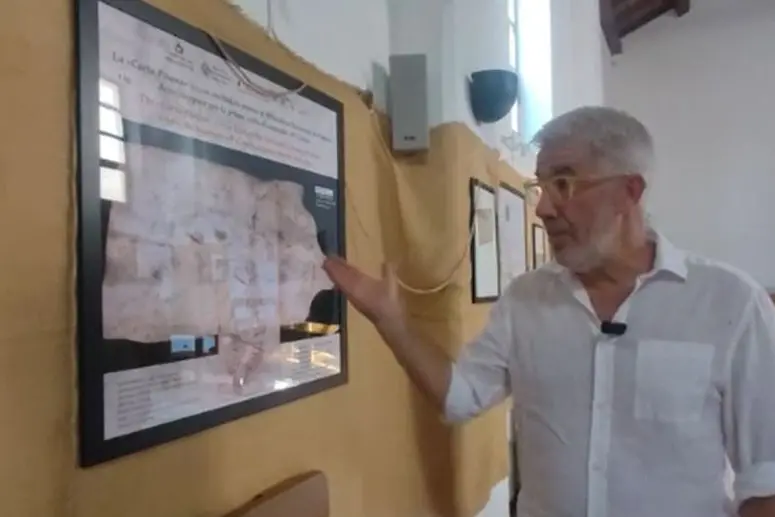Arzachena, a document exhibited in the exhibition backdates the toponym of Porto Cervo to 1290
It is presented by Mario Sotgiu, president of the association La scatola del tempo(photo Ronchi)
Per restare aggiornato entra nel nostro canale Whatsapp
«This time we wanted to present a historical research that begins with an extraordinary document, which is located in Paris at the National Library of France; it is a map from 1290 in which the toponym of Porto Cervo appears for the first time»; speaking is Mario Sotgiu, president of the association La scatola del tempo.
The document is on display in the exhibition, entitled Porto Cervo nell'antica cartografia, inaugurated in recent days in Arzachena and located in the former church of San Pietro.
On display are a series of papers and documents that, starting from 1290, through the Middle Ages and the following centuries, arrive at the 19th century. All precious rarities or in any case little known, discovered and valorized by a person like Mario Sotgiu, strongly driven by a marked curiosity and an incredible passion as well as by competence and knowledge of the subject.
The exhibition presents an artistic creation by the Infioratori San Pietro di Arzachena group, made with sea salt crystals, depicting the ancient landing place of Porto Cervo, dated 1290. Among the cartography on display, a map from 1583 stands out, by a Flemish cartographer, «which for the first time indicates the toponyms of Arzachena, with the wording “Archena” and Porto Cervo with the wording “Cervio”, which makes us understand that there was already life here in that period, allowing us to backdate the origin of both Porto Cervo and Arzachena».
But also a very, very long time ago, as demonstrated by another document on display, dating back to 1173, an agreement between the Opera di Santa Maria (the financial institution of the Cathedral of Pisa) and Bishop Bernardo of Civita, now Olbia. It is a contract between the Opera di Santa Maria of Pisa and the Bishop of Civita "to divide property rights on churches, courts and appurtenances throughout the Kingdom of Gallura" (including Loco Demola today Monti di Mola, and therefore Porto Cervo). "The division also included 2 servants with children".
